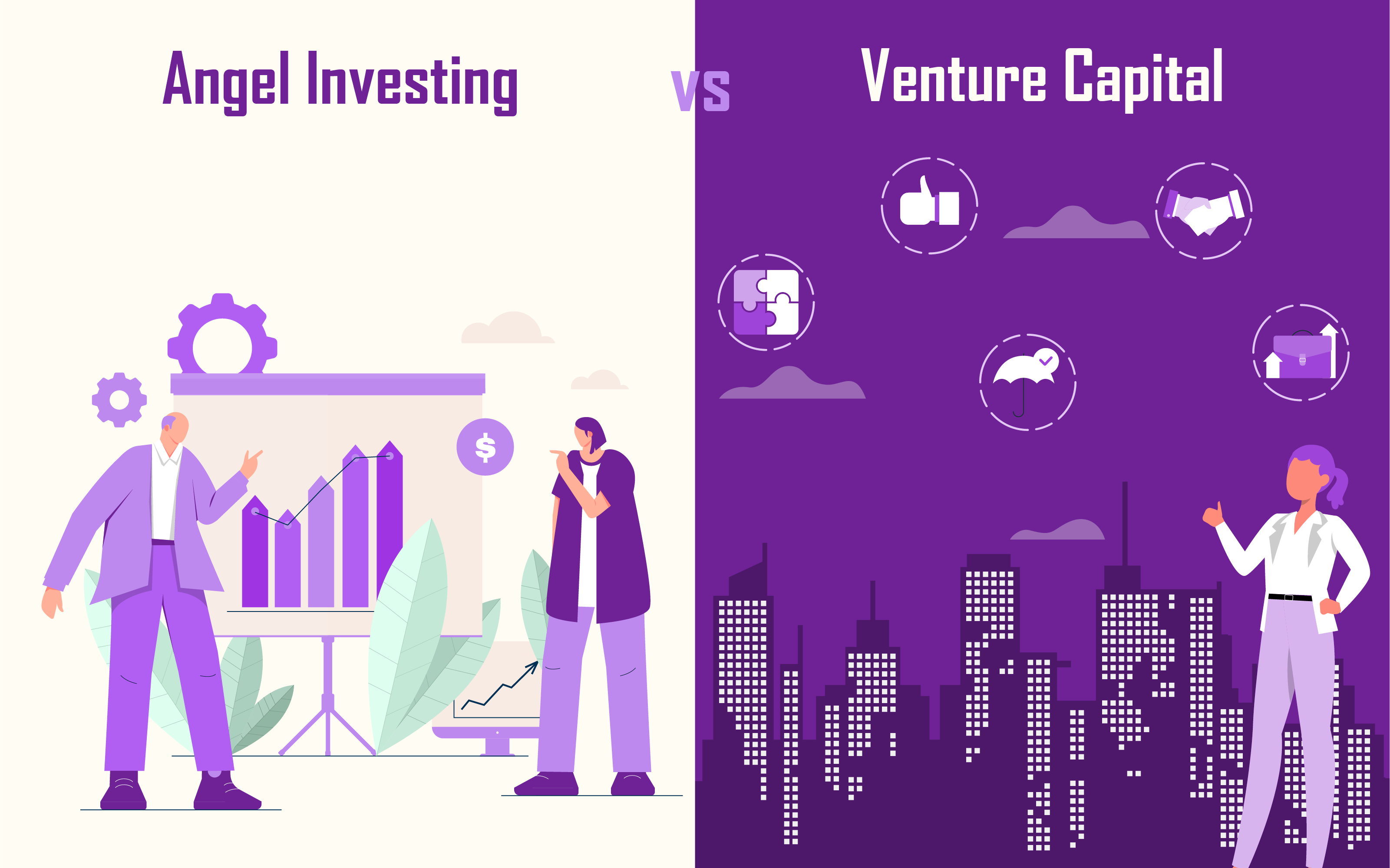
Overall global venture capital investment during the first quarter of 2025 was $113 billion, a 17% increase over last quarter and an impressive 54% over last year's comparable quarter. Late-stage investing was the force behind the advance, moving 147% year-over-year to $81 billion, showing firm faith in startup investing as the world remains uncertain.
For venture capitalists and startup investors, two main choices are at hand: venture capital and angel investment. Both invest in potentially high-growth firms, but differ significantly in size of investment, level of involvement, and level of risk.
Angel investing vs. venture capital is not so much a decision about capital—it's a decision about aligning your investment approach with your financial goals, risk tolerance, and desired level of involvement. The difference is quite critical to a productive alternative investment portfolio.

Angel investing is one of the simplest entry points into startup capital that individual investors can use. For equity stakes in early-stage companies, angel investors put their own money into the venture.
The angel investment market is projected to increase at a compound annual growth rate (CAGR) of 11.3%, to about $27.83 billion in 2024 and reach $72.35 billion by 2033. Early-stage investments, however, saw a decline in the first quarter of 2025, falling to $24 billion, the lowest in recent quarters. This opened opportunities and raised competition for angel investors.
Uber's early angels who invested $10,000-$100,000 in seed rounds saw returns exceeding 5,000x when the company went public, demonstrating the extraordinary potential of early-stage investing.

Venture capital is institutional startup investing, wherein professional firms make use of pooled capital to invest in high-growth firms by structured rounds.
2025 Market Trends: The US IPO market registered a robust recovery with 38% more IPOs and 48% increase in proceeds, with 20 IPOs collecting over $500 million. This is a sign of renewed investor confidence and better exit options for angel and VC investments. Clean energy startups are also expected to gather $50 billion in investments driven by the world climate tech push.
Sequoia Capital's systematic approach created some of the world's most valuable companies, including Apple, Google, and WhatsApp, through disciplined investment processes and strategic guidance.
|
Criteria |
Angel Investor |
Venture Capitalist |
|
Investor Type |
Individual using personal funds |
Professional firm with institutional capital |
|
Capital Amount |
$25K - $500K per deal |
$1M - $50M+ per round |
|
Investment Stage |
Pre-seed, Seed |
Series A and later |
|
Decision Time |
Quick (days to weeks) |
Slower (weeks to months) |
|
Equity Percentage |
1% - 10% |
10% - 30% per round |
|
Involvement Level |
Personal guidance |
Board oversight, strategic management |
|
Risk Level |
Extremely High |
High but diversified |
|
Timeline |
2-5 years |
10+ years |
|
Portfolio Size |
5-20 investments |
20-100+ investments |

Available Capital
Risk Tolerance
Time Commitment
Ideal Angel Investor
Ideal VC Investor
Instead of making an exclusive choice, sophisticated investors tend to blend both approaches:
Successful startup investing involves exposure to various markets (Silicon Valley, New York, Austin) and industries (technology, healthcare, fintech, climate tech) to maximize risk-adjusted return.

Your investment philosophy and situation will determine whether you choose venture capital or angel investing. While Q1 2025 venture capital rose to $113 billion, a 54% year-over-year increase, and the angel investment space is projected to grow at an 11.3% CAGR through 2033, possibilities for investors willing to assume more risk for potentially transformational rewards are endless.
Alternative investing is now a mainstream activity—yet institutional-level considerations regarding risk management and strategic allocation are still in order.
Whether you choose to go in for angel investing, venture capital, or both, it is not the choice that makes the difference, but proper methodical implementation, continuous learning, and good risk management. The startup system offers fantastic opportunities to ready investors.
Ready to explore startup investing? Consider designing a personalized alternative investment strategy that meets your investment goals and risk tolerance